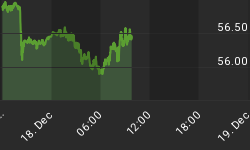Investors who were on the wrong side of the market got pretty beat up in the past few months.
The worse the beating, the longer it takes someone to regain trust and confidence.
While many investors are looking at the VIX (Volatility Index) for signs that fear levels are dropping, the VIX does NOT measure the "commitment and conviction" an investor is willing to put behind improving "trust" conditions.
So, what should you look at in order to "see and know" when fear levels have subsided enough for investors to reach a "market supportive level of commitment and conviction"?
The answer is pretty simple when you really think about it. Remember the old saying, "Put your money where your mouth is"?
That is what you should be looking for ... significant changes in the willingness to invest money in spite of the risks endured in the past few months.
Specifically, you want to look at the "flow of money levels" entering or exiting the stock market.
So, let's do that this morning. Today's chart measures inflowing or outflowing Liquidity in the stock market on a daily basis.
Here is the explanation of the chart ....
There are only two Major conditions for Liquidity flows. They are either in expansion or contraction. During Liquidity Expansion, the inflows exceed all the outflows and net positive money is entering the stock market. That means that, not only are people buying, but they are also hesitating to sell because they do not want to miss out on perceived, additional action to the upside.
Liquidity Contraction is just the opposite. Outflows exceed all the inflows and net negative money is leaving the stock market. That means that ... not only are people selling, but they are hesitating to buy because they do not want to get hurt again on perceived, additional action to the downside.
So, let's look at the chart now to see what is happening now. First, note that Liquidity levels are in Contraction with money still draining out of the market. But also note, that since the market low at the end of November, that the negative liquidity flows have been become less negative over time. The action of the Liquidity is showing higher/lows and higher/highs, so that means investors have been slowly sticking their toes in the water and buying a little here and there.
Now, note that Liquidity actually went into Contraction last JUNE. It broke its up trend to the downside last MAY.
Since last July, Liquidity has been in Contraction AND in a low trading range. The peak high of the trading range occurred last September (but still in contraction territory). Liquidity is now moving up to test that resistance level.
If the market is going to have the legs that you are looking for, it will only come by investor "commitment levels that make them put their money where their mouths are".
For that to happen, you will want to see:
1. Inflowing Liquidity take out the previous September high, and ...
2. And, then to continue in an UP TREND.
As long as Liquidity Inflows are trending up, more and more investors will be joining in and driving stock prices higher.
What should you do next? Wait to see if the improving Liquidity conditions can take out last September's resistance level ... and then continue to TREND UP from there, and then hopefully move into Expansion Territory. Each event should be another leg up in the market.
















